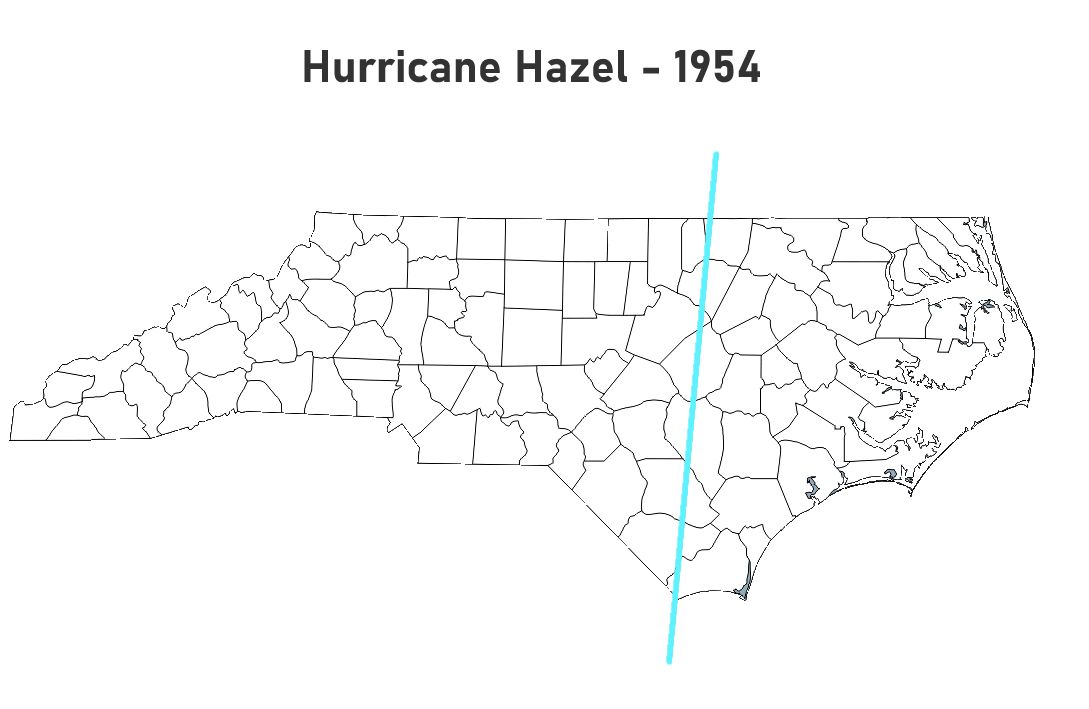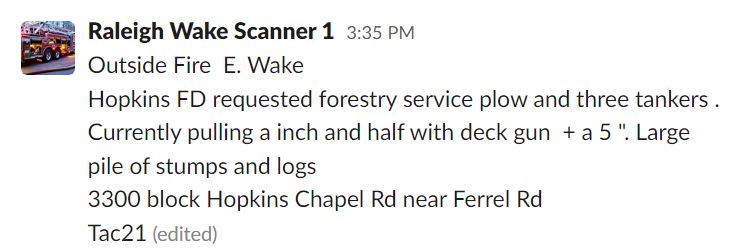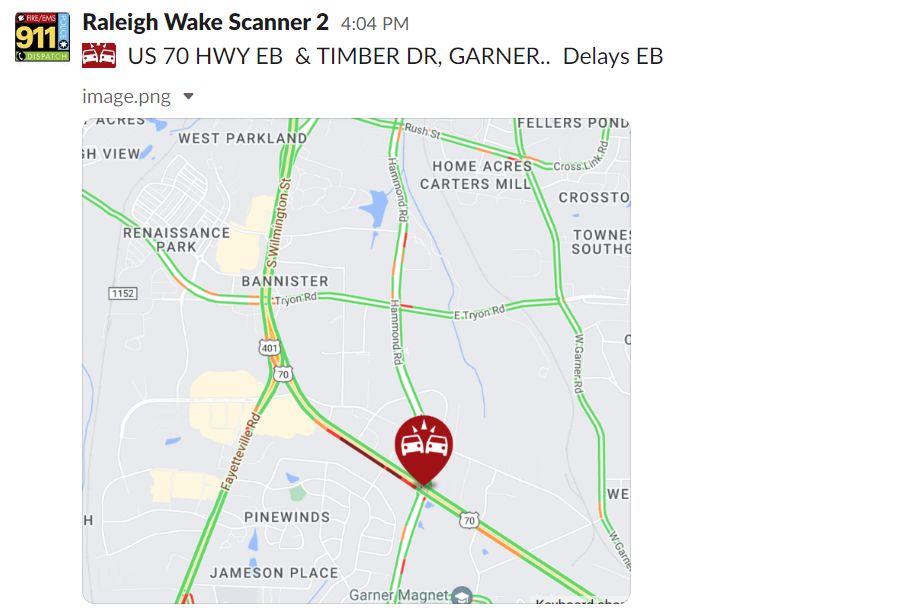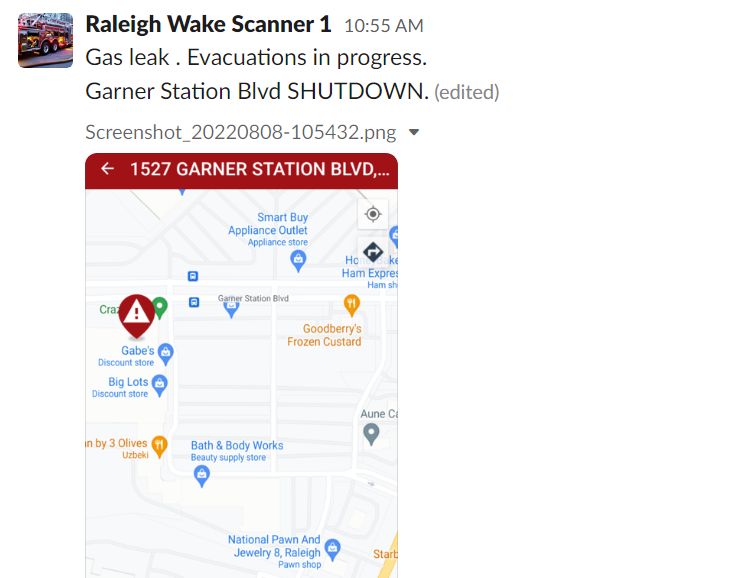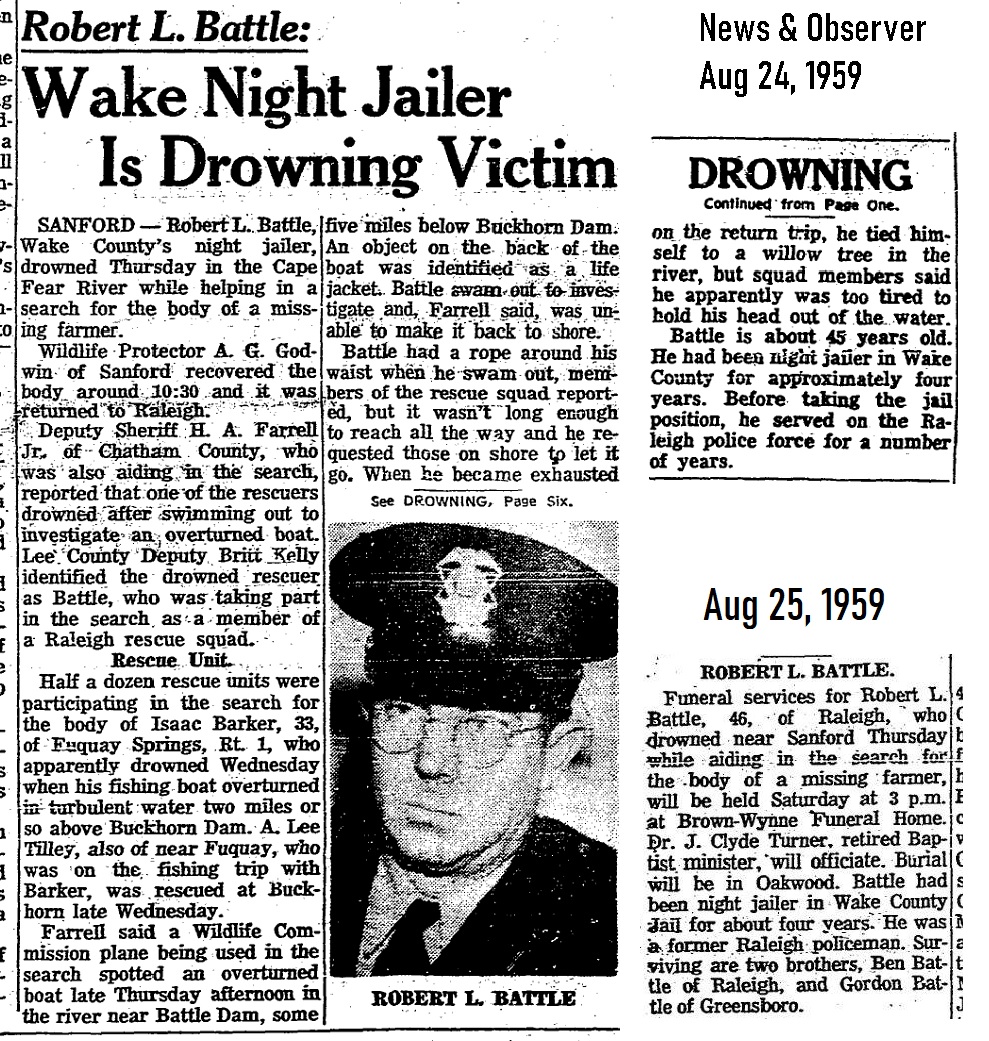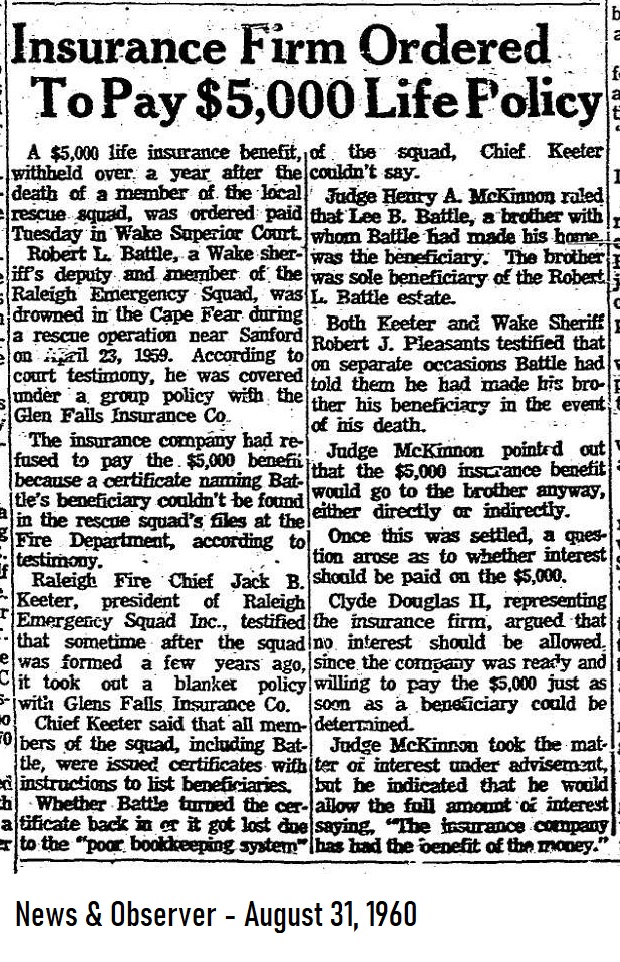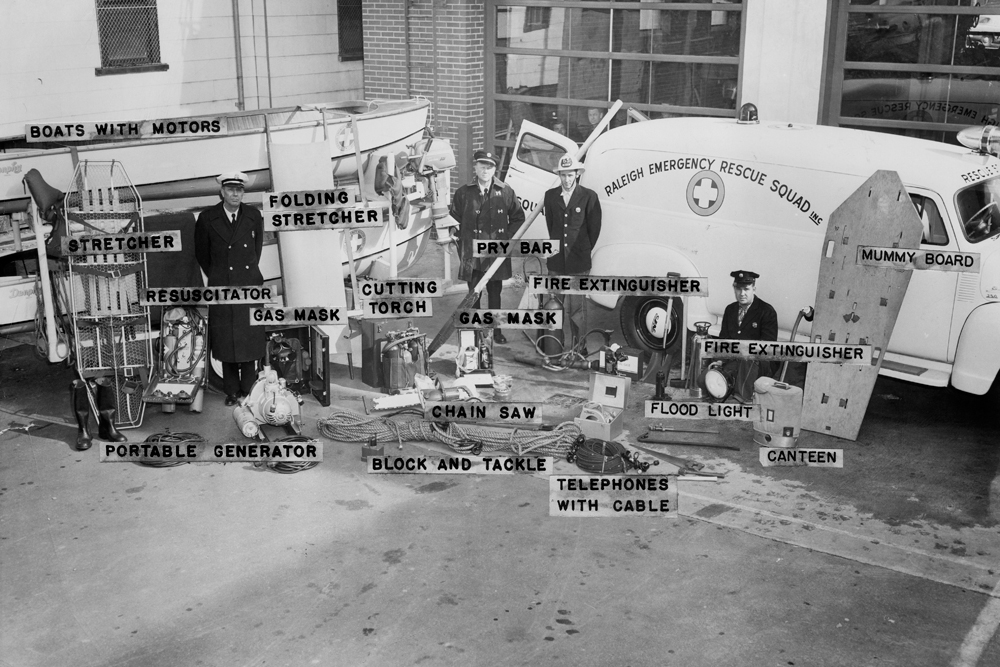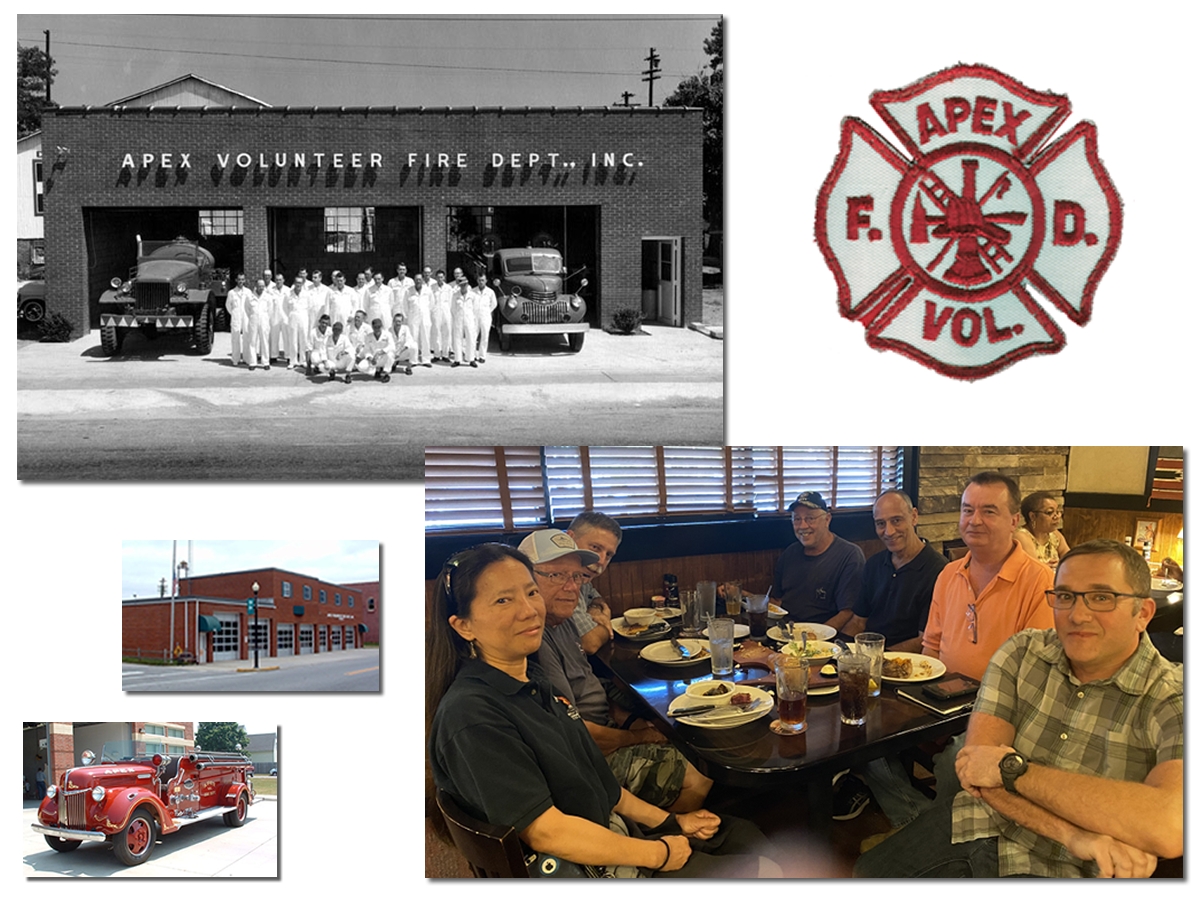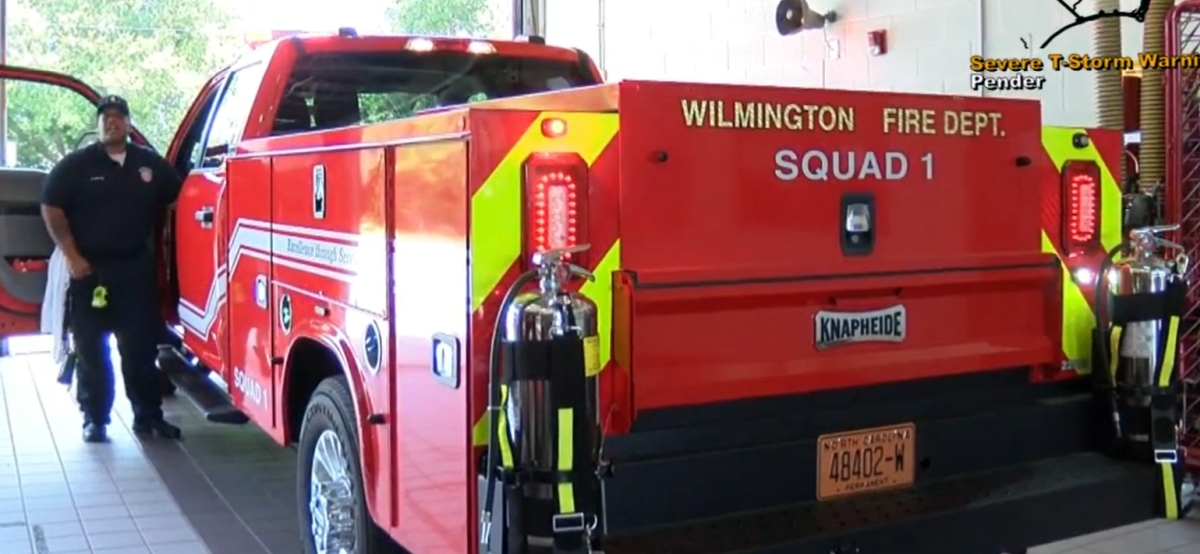With the remnants of Hurricane Ian reaching Raleigh today, here’s a look at the city’s water rescue vehicles, past and present.
Left to right, top to bottom:
1953 wooden rescue boats, originally operated by the Raleigh Emergency Rescue Squad at Station 1. And they’ve survived to this date, presently in storage. Lee Wilson photo, from 2008, when they were returned to RFD after years of storage at another city facility.
1975? metal rescue boats. The 14-foot aluminum boats along with trailers were donated by Jeffries Auto Marina Service in the spring of that year. They replaced the heavier wooden ones, which required six people to load and unload, and ten people to transport to harder-to-reach areas.
2000s? SeaArk metal boat plus rigid inflatable, shown in 2006 as pulled by Rescue 7 after remnants of a tropical storm (as memory serves) caused flooding on Capital Boulevard and stranded occupants at the Milner Inn and other nearby locations. More pics at https://legeros.smugmug.com/Fire-Photos/2006/2006-06-14-rfd-capital-blvd/
2007/08? rigid inflatable boats, part of the equipment cache of NC Task Force 8, assigned to USAR 801. Boat trailer was local/shop-built, correct? Identical units were placed in service in Raleigh, Cary, Durham, and Chapel Hill. Pulled by a 2007 Ford F-550 Super Duty/Knapheide water rescue unit.
More rigid inflatable boats, assigned to Squad 7 and pulled by Mini 7. Identical/similar equipment assigned to Squad 14 and pulled by Mini 14. Photographed during prep for Hurricane Florence in 2018. More pics at https://legeros.smugmug.com/Fire-Photos/2018/Hurricane-Florence/Storm-Prep-Raleigh
Still more rigid inflatable boats, assigned to USAR 801. Seen on street, returning to Station 21. (The unit is cross-staffed by Engine 21.) The trailer is newer, as the earlier USAR 801 trailer was destroyed in a (trailer only) roll-over accident on Wilmington Street at Hoke Street circa 2018.
The trailer is one of several assigned to state-funded swift water teams around the state. Couple more pics at https://legeros.smugmug.com/Fire-Photos/2020/2020-06-13-rfd-usar801. See closer views in these pics, during prep for Hurricane Dorian, https://legeros.smugmug.com/Fire-Photos/2019/Dorian/NCTF8/
2021 Acela/General high-water rescue vehicle, shown in January 2022 on Glenwood Avenue. Designed for standing water operation. Cross-staffed by Engine 17. The vehicle was built from a 2003 Stewart & Stevenson military transport. More pics at https://legeros.smugmug.com/Fire-Photos/2022/2022-01-03-rfd-glenwood-ave
See Mike’s historic register of RFD apparatus for more info and pics : https://legeros.com/ralwake/raleigh/apparatus
Also, did you know that a member of the Raleigh Emergency Rescue Squad died in the line of duty, during a water search in the Cape Fear River in 1959? Read about volunteer member and Wake County Sheriff’s Deputy Robert Battle at https://legeros.com/blog/raleigh-rescue-drowning-1959.

